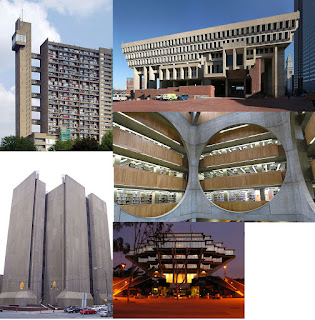Architecture of the Hunger Games
When asked about inspiration for the Capitol of Panem, Hunger Games director Gary Ross said the production team looked at Brutalist architecture:
“It’s set in the future but needs its own past. So the Capitol had to have a sense of history. So we went for architecture that was massive, concrete, monumental. We took our inspiration from mid-20th century Brutalism–and as I was looking at this I realized the power is expressed through open spaces, so that was the first reference point. We looked at great seats of power, like Red Square, and went from there.” [quoted from Empire Magazine, March 2012, p 95]
Mr. Ross has his facts a little twisted, it seems. While it may be that the manner in which punishments get meted out by representatives of the Capitol is brutal, and its ruler, President Snow, encourages the Games–which are brutal enough on their own–as a reinforcement of the Capitol’s power over the other districts, still, saying that the brutal Capitol regime needs to be represented by Brutalism seems like the misguided effort of a publicist to say something seemingly knowledgable about architecture. It would, of course, be easy for the layperson to think about the Brutalist style as being in keeping with a government with brutal tendencies.
Except that 1) Brutalist architecture is not the product of brutal regimes, nor representative of them; and 2) most of the architecture in the movie is not Brutalist.
Here’s what a Hunger Games fan site posted as examples – a collage of Brutalist buildings culled from the Wikipedia entry on Brutalism:

To be fair, those are pictures of Brutalist buildings – well, I’m not so sure about the (uncaptioned) inclusion of Lou Kahn’s library at Philips Exeter Academy–so, mostly pictures of Brutalist buildings. Anyway, looking at those pictures, and remembering stills from the movie, it’s easy to feel a disconnect between the Brutalist buildings of the past and the projections on screen inspired by them.
What was presented in The Hunger Games was not that. The Capitol Terminal, for example, while massive, could hardly be considered rough or unfinished, as it was covered in a glistening white–possibly stone–with various electronic billboards. Until I get permission from Lionsgate to post images of Panem, I’ll refrain from doing so (I thought about posting some screen-captures, but upon reading their legal terms, thought better of it); in the meantime, you’ll have to take the Capitol tour on their website or see the movie to know what I’m talking about. But here’s a quick refresher on Red Square:
